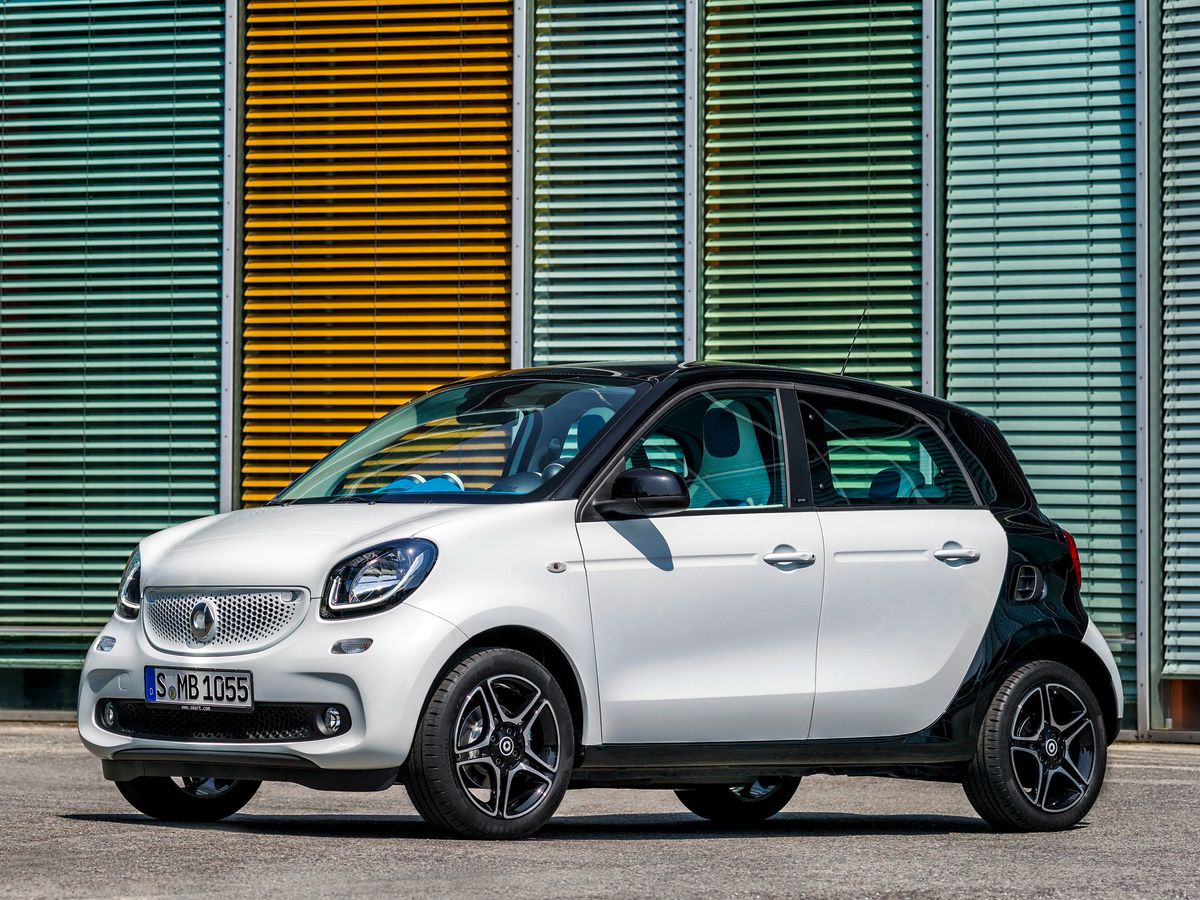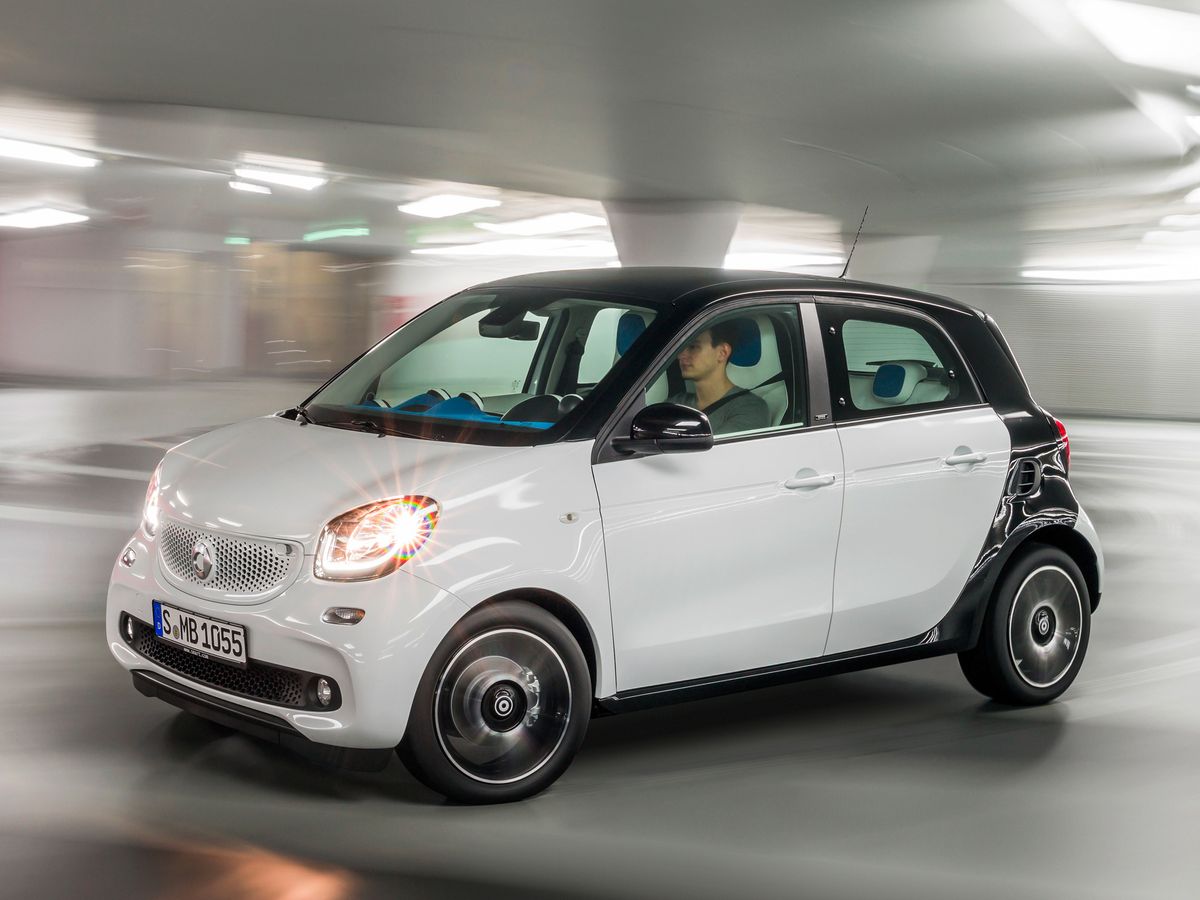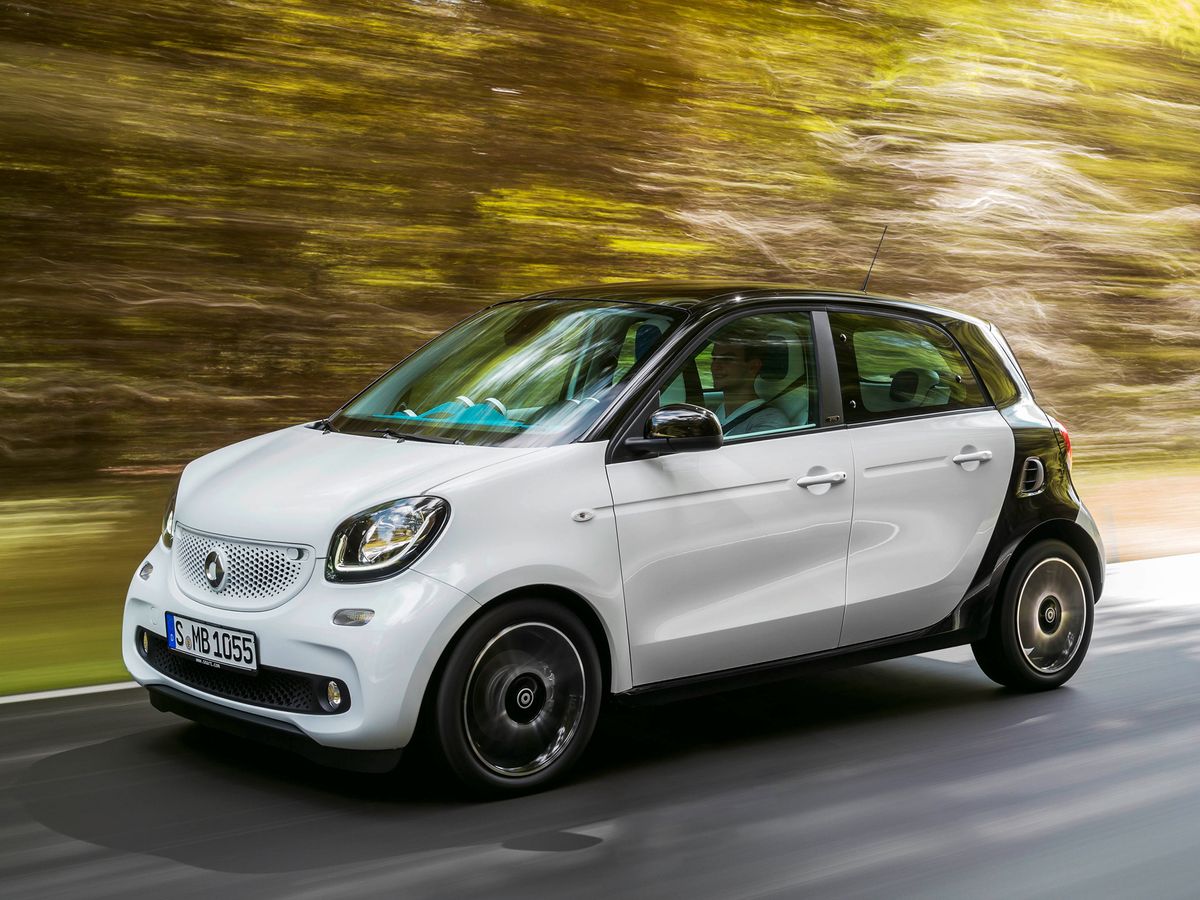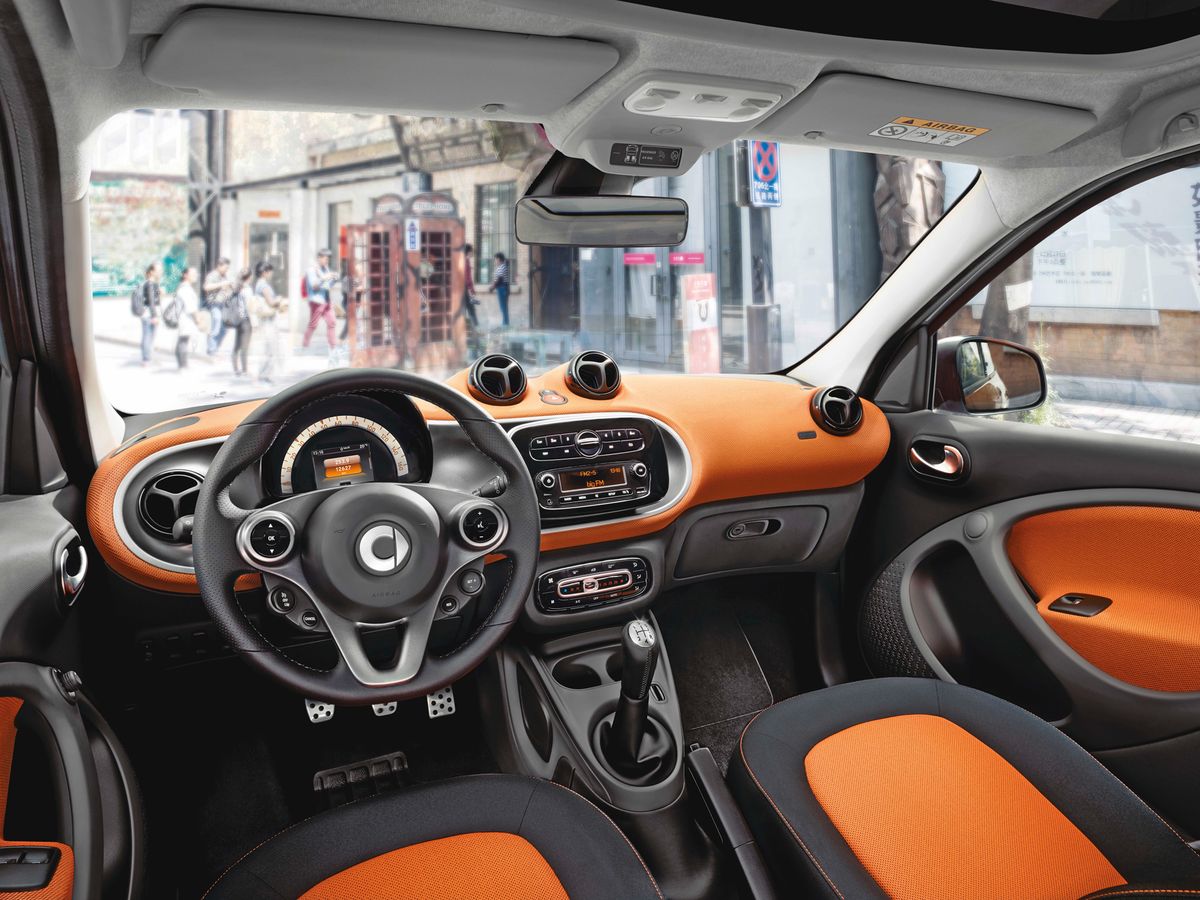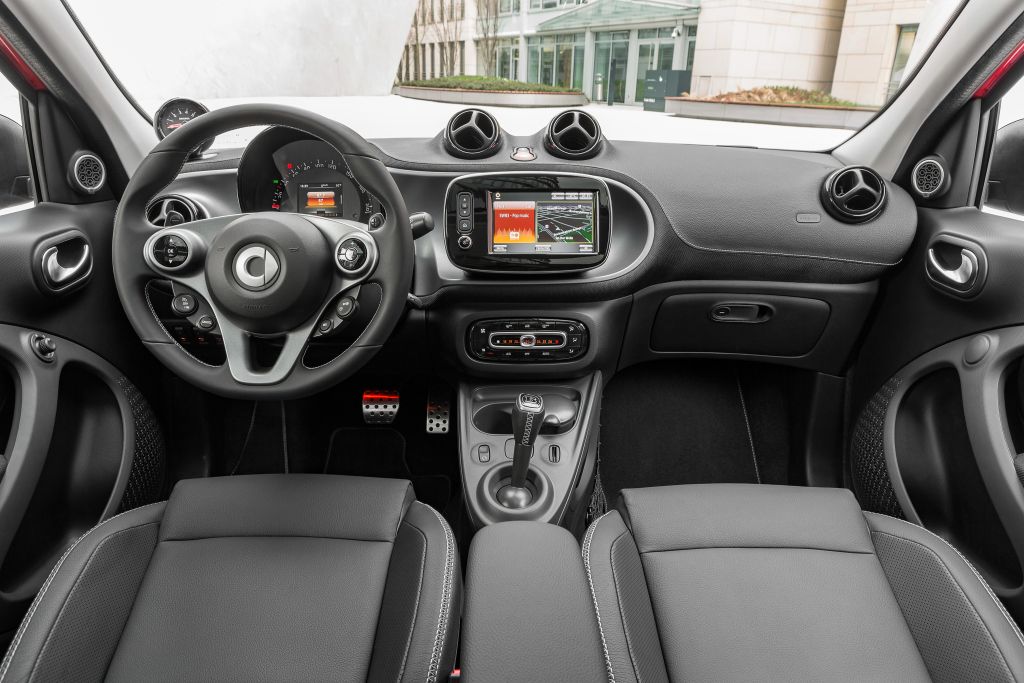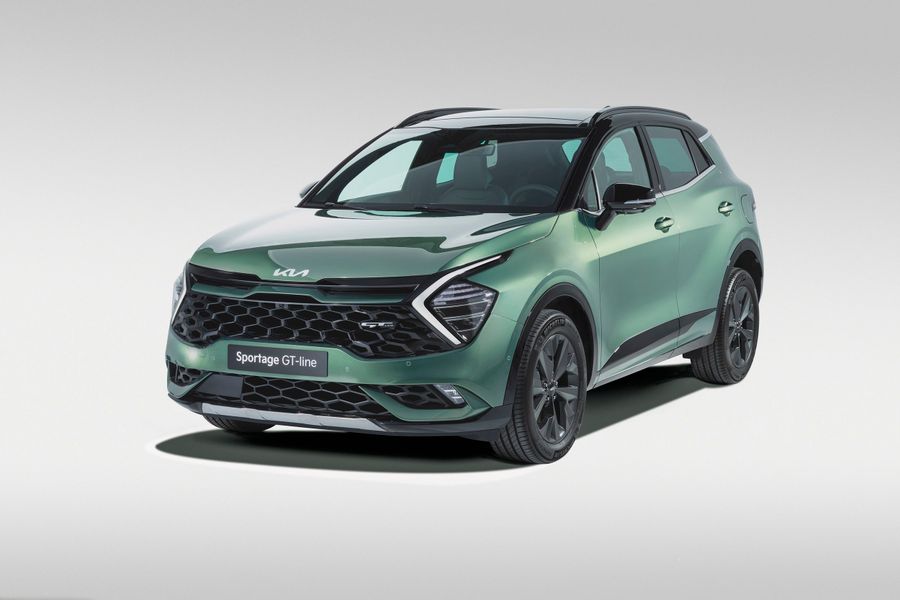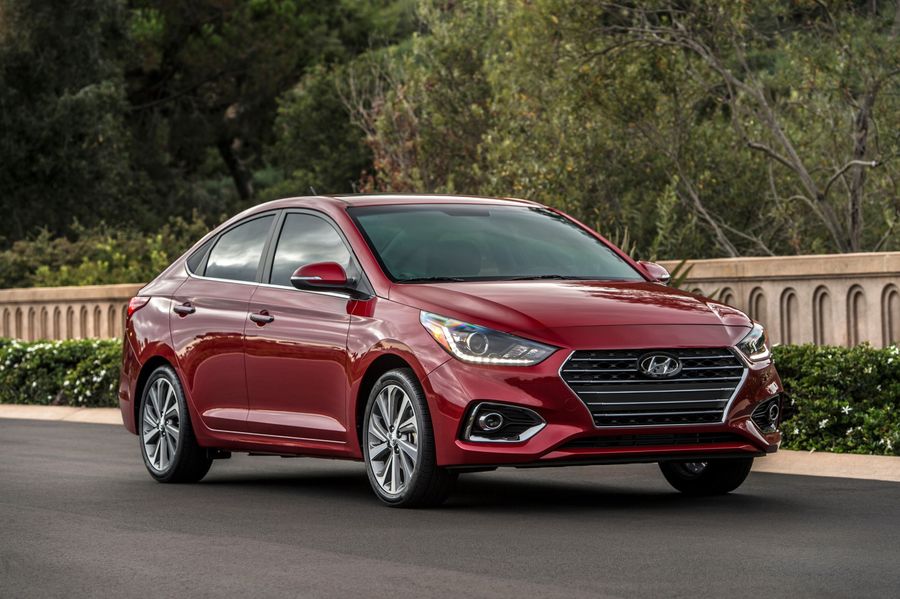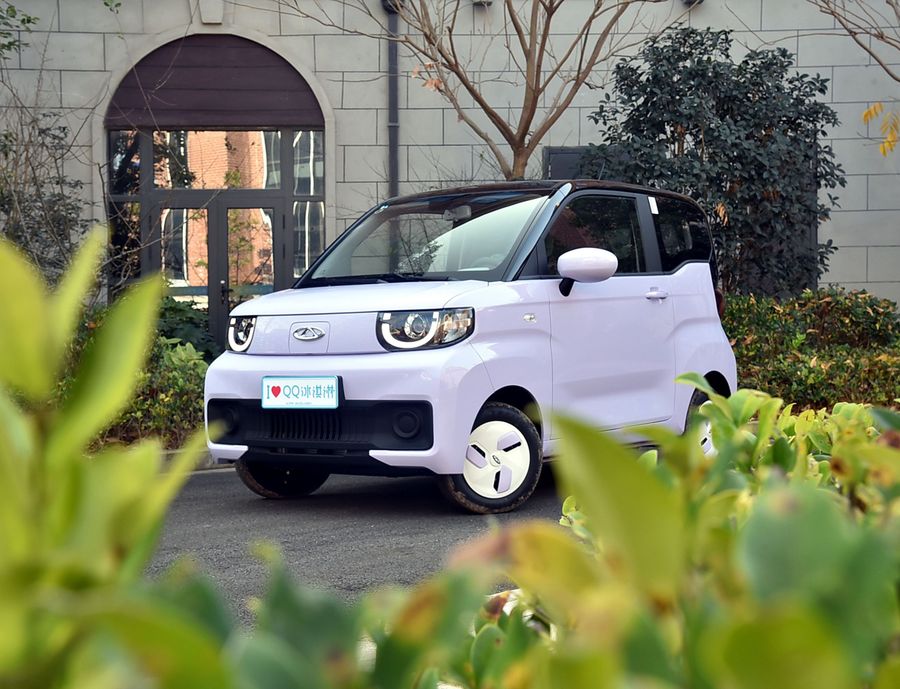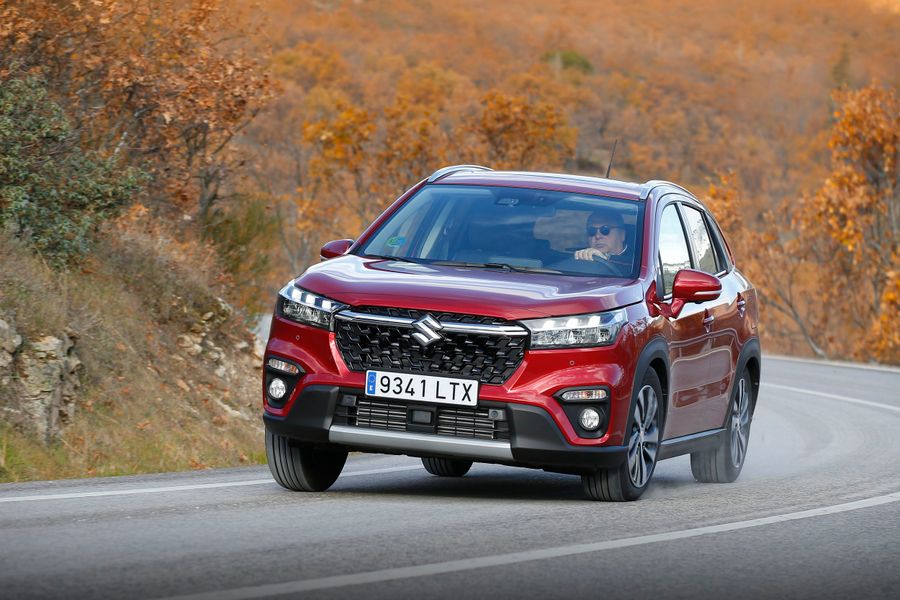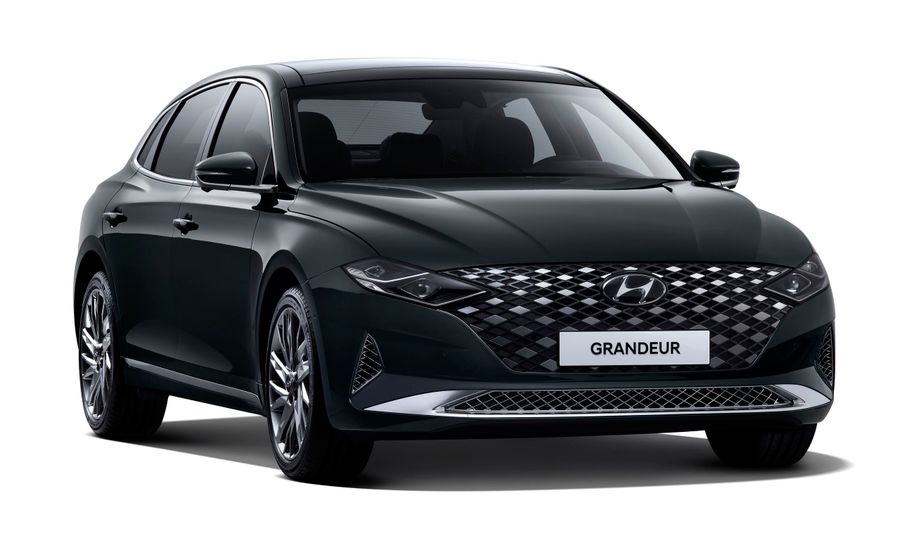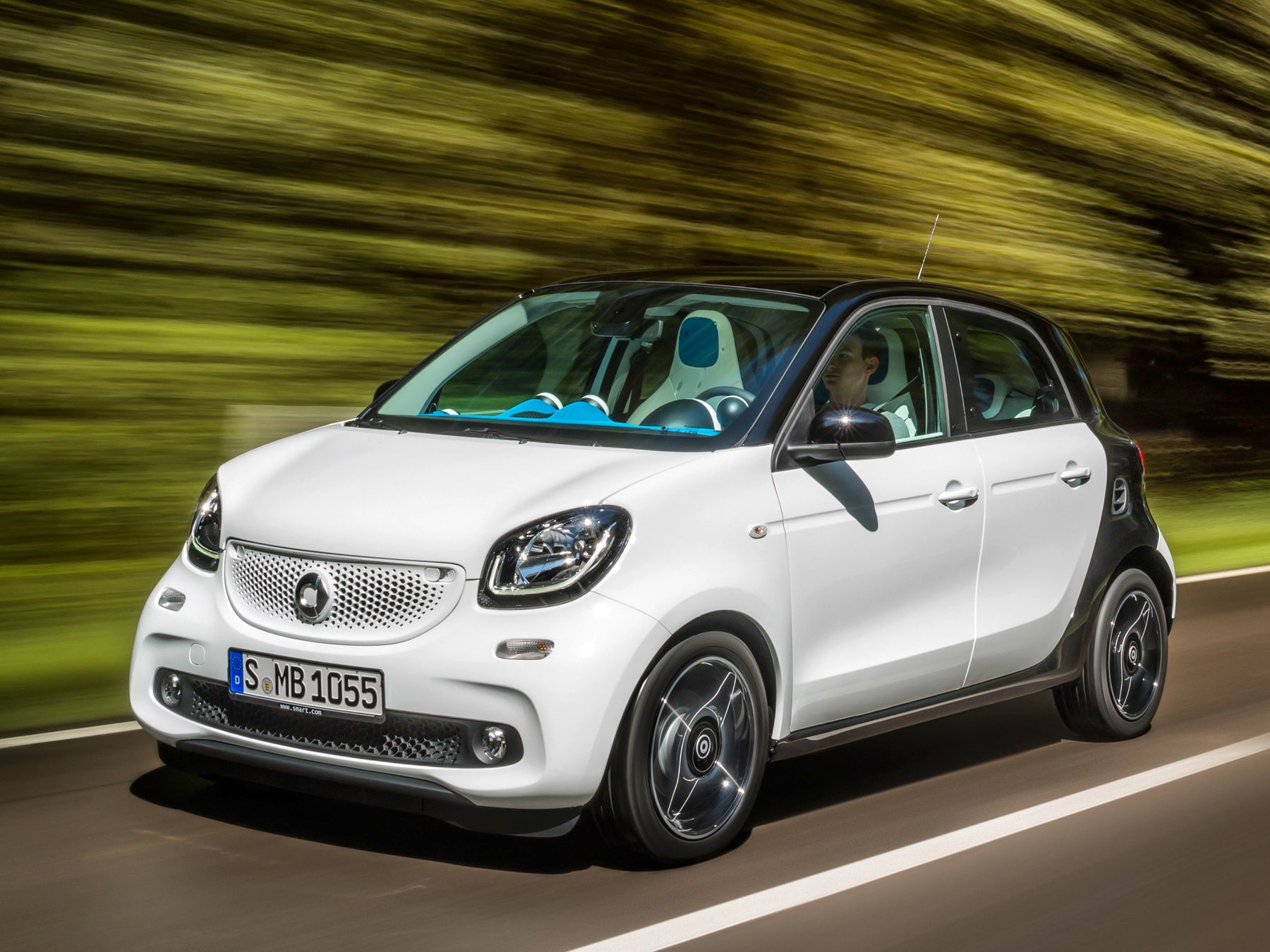
2014 Smart Forfour Hatchback. 2nd generation
The Smart Forfour is a subcompact 5-door hatchback, which has been produced by Smart since 2004. Unlike other models from this brand, it has a relatively large body size and a spacious four- or five-seater interior. The second generation of the 2014 model is available on the market (as of 2020).
The new generation of the Smart Forfour is based on the Smart Fourjoy concept presented at the 2013 Frankfurt Motor Show. The new design of the German-Swiss brand features a honeycomb grille and LED headlights.
Exterior
The production hatchback is significantly different from the concept. The body of the 2014/2015 Smart Forfour is larger than that of the two-door Fortwo, but shorter than that of the first generation car: it is 3,495 mm long, 1,665 mm wide and 1,554 mm high. Just as the first generation, this one has a small clearance of 132 mm. It is pleasant to see that for the convenience of rear row passengers, the doors open almost 90 degrees. The model is four-seater.
The exterior design is positive and nice. The two-tone paint accentuates the soft, rounded body shape. You won’t find any sharp edges or aggression. The headlights are oval, and the elongated air intake resembles a smile. The color of the body is very non-standard: the stern, pillars and roof are painted in a color different from the main shade of the body. The rear bumper flows harmoniously into the fenders, and the taillights are trapezoidal.
The Smart Forfour hatchback is one of the most interesting representatives of the urban class, offering a decent list of equipment and a comfortable four-seater interior. Disadvantages include stiff suspension and small trunk.
Powertrains and chassis
The second generation Forfour hatchback is equipped with a 999 cc petrol engine (3 cylinders, 71 hp and 91 Nm). The maximum speed is 151 km/h, while the acceleration to 100 km/h occurs in almost 16 seconds. This version is equipped with a 5-speed manual transmission or a 6-speed dual-clutch semi-automatic transmission, which is called the Twinamic. The second option is an 898-cc turbo engine, installed on the Renault Twingo, with which the Smart little car shares the platform (90 hp, 135 Nm). This engine is equipped with a 6-speed semi-automatic transmission. The maximum speed reaches 165 km/h. It takes the car 11.9 seconds to accelerate to 100 km/h. The Forfour Brabus can be equipped with an even more powerful version of the engine, generating 109-hp (170 Nm) and providing acceleration to 100 km/h in just 10.5 seconds, with the top speed reaching 180 km/h.
The Smart Forfour sports suspension offers a 10 mm lower ground clearance. Combined fuel consumption ranges from 4.2 to 4.6 l/100 km, depending on the version. There is also an electric version with a 60 kW motor and a 17.6 kWh battery, and a drive range of 155 km.
The suspension of the second generation car has a structure that is similar to the Smart Fortwo, featuring the MacPherson strut front suspension with redesigned levers that allow 51-degree wheel steering for improved agility, and a De Dion-type rear suspension with springs. The engine is located unconventionally, above the rear axle under the floor of the trunk. The car is rear-wheel drive. The car is equipped with an electric power steering, front disc brakes and rear drum brakes. The trunk volume of the Smart Forfour is quite modest: 185 liters (975 liters with the seats folded down).
Trim levels and equipment
The new Smart Forfour is equipped with front and side airbags, as well as knee airbags. The standard equipment also includes active systems (ABS, EBD, ESP), hill start assist, cruise control, tire pressure monitoring system. The list of options also includes curtain airbags, light and rain sensors, lane departure warning system with audible and visual alerts, Crosswind Assist, collision warning function, etc.
- Entry-level model: R15 steel wheels, black textured exterior mirror housing, 3-spoke steering wheel with cruise control buttons, black fabric seats and black interior.
- Passion: A more eye-catching exterior and interior in three bold color combinations, as well as alloy wheels, an on-board computer with a 3.5-inch display in the dashboard.
- Prime: Direct-Steer multifunction steering wheel, leather-trimmed shift knob, heated seats. Direct-Steer system changes the gear ratio and steering effort depending on the vehicle speed and driving situation. When driving at low speeds, for example in a parking lot, the system adapts for maximum agility. At high speeds, the steering becomes less sharp due to the increase in lateral acceleration.
- Proxy (maximum trim level): 16-inch light-alloy wheels, panoramic roof, combined artificial leather-fabric interior trim, climate control unit, multifunctional sports leather steering wheel, etc.
- Brabus and Brabus Xclusive are tuning versions, which are equipped with a more powerful turbo engine, as well as various unique elements of exterior and interior decoration.


